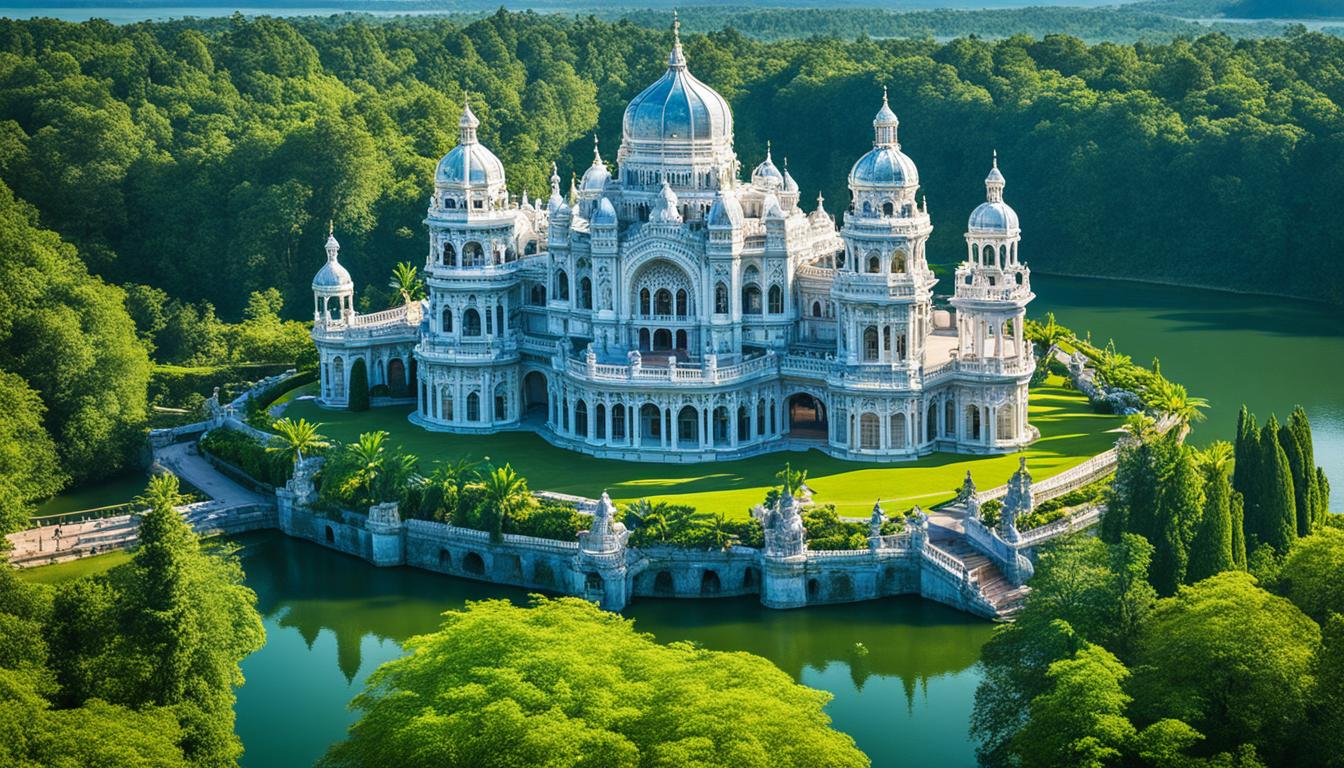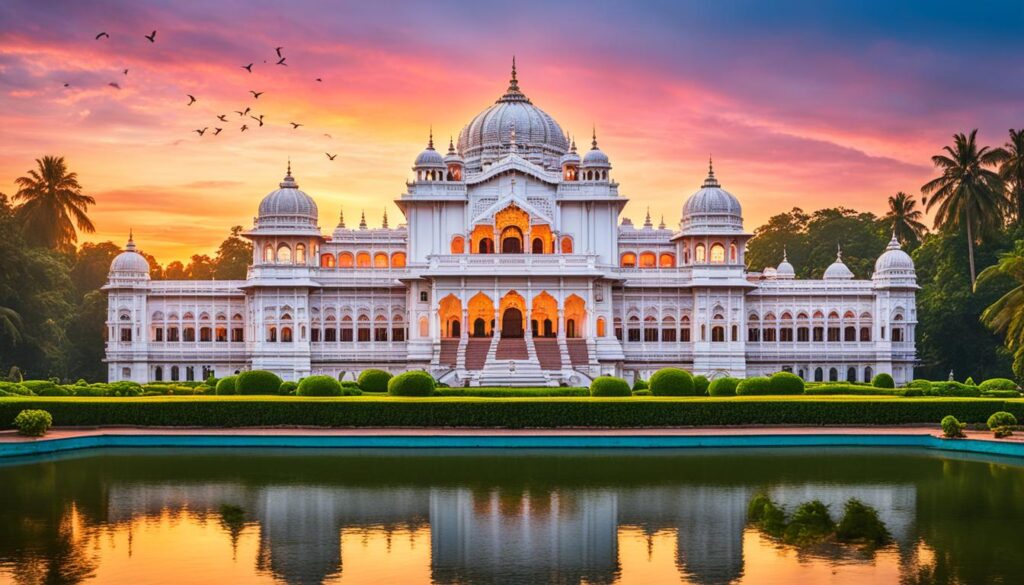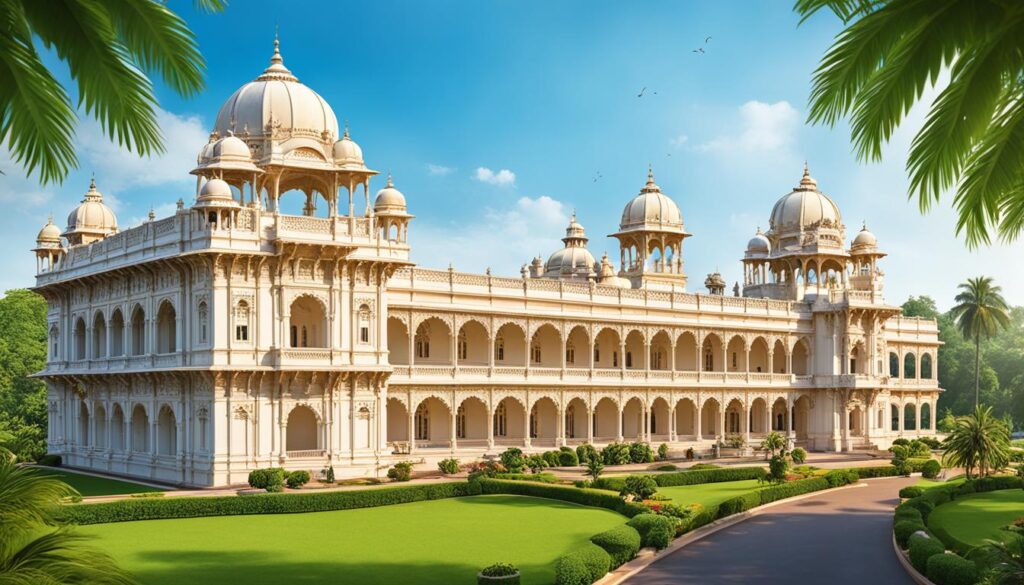
Explore Famous Palaces in India | Regal Heritage
India’s heritage is a real treasure trove brimming with diversity and richness. The chapters of our history are colored by the reign of many benevolent maharajas and sultans. Their splendid traditions and culture are reflected in the grand palaces they constructed in various parts of India. These majestic abodes, adorned with exquisite artworks and captivating aesthetics, are truly striking and can transport us back to our illustrious history. For those who are captivated by our glorious past and abundant heritage, here is a list of the best palaces in India to visit during your next trip.
Let me take you on a journey to one such palace that will leave you in awe of its grandeur.
Once upon a time, in the vibrant city of Jodhpur, stood a remarkable structure that resonated with elegance and splendor – the Umaid Bhawan Palace. This architectural marvel, built with yellow sandstone, sprawled across 26 acres of land, telling tales of a bygone era.
As I stepped inside, I was overwhelmed by the sheer opulence that surrounded me. Every nook and cranny of the palace exuded regality and showcased the craftsmanship of skilled artisans. From the stately corridors and exquisite galleries to the ornate domes and magnificent courtyards, the Umaid Bhawan Palace was a sight to behold.
The palace had something for everyone. For history buffs, there was a royal museum filled with artifacts and memorabilia that offered insights into the lives of the erstwhile monarchs. And for those seeking a taste of luxury, the palace housed a lavish hotel that welcomed guests with warmth and hospitality.
But what truly left me in awe was the collection of vintage cars at the palace. Each vehicle seemed to tell a story of its own, transporting me back to a time when grandeur knew no bounds.
Visiting the Umaid Bhawan Palace was like stepping into a fairy tale, where the walls whispered tales of a glorious past and the air seemed to resonate with the echoes of a bygone era. It was an experience that reminded me of the beauty and grandeur of India’s royal palaces.
Stay tuned as we unravel more stories of India’s majestic palaces.
Umaid Bhawan Palace, Jodhpur
The imposing Umaid Bhawan Palace in Jodhpur, built with yellow sandstone, sprawls across 26 acres of land. It is renowned as the world’s largest private residence, boasting a staggering 347 rooms. This architectural marvel is divided into three sections, each offering a unique experience.
- Luxury Hotel: One section of Umaid Bhawan Palace has been transformed into a luxury hotel managed by the prestigious Taj Hotels. The grandeur and opulence of this palace-turned-hotel provide an unforgettable experience for guests.
- Royal Museum: Another section of the palace houses a museum that showcases the rich history and heritage of Jodhpur’s royal family. The museum features attractive galleries exhibiting an impressive collection of art, artifacts, and historical treasures.
- Regal Family’s Residence: The final section of Umaid Bhawan Palace serves as the residence for the royal family of Jodhpur. This adds an air of exclusivity and authenticity to the palace, providing visitors with a glimpse into the regal lifestyle.
The Umaid Bhawan Palace is truly one of the most magnificent and captivating palaces in the world. Its regal charm, exquisite architecture, and impressive collection of automobiles make it an absolute must-visit for anyone seeking a taste of royal luxury and history.
Amba Vilas Palace, Mysore
The Amba Vilas Palace, also known as the Mysore Maharaja Palace, is an architectural marvel that showcases a stunning blend of Hindu, Mughal, Rajput, and Gothic styles. Constructed in 1912, this palace stands tall as one of the biggest palaces in India, boasting captivating indoors and breathtaking outdoors.
When the sun sets, the Amba Vilas Palace is beautifully illuminated with golden lights, adding a touch of enchantment to its grandeur. It is no wonder that this palace is the second-most visited historical monument in India after the iconic Taj Mahal.
“The Amba Vilas Palace is a true testament to the Indo-Saracenic style of architecture, capturing the essence of different eras and cultures. Its intricate details and opulent design make it a popular attraction among history enthusiasts and architecture lovers.”
As you step inside, you’ll be greeted by majestic halls adorned with exquisite artwork, ornate ceilings, and beautifully crafted pillars. The palace houses a vast collection of paintings, artifacts, and royal memorabilia, offering a glimpse into the regal history of Mysore.
Throughout its majestic corridors, you’ll discover intricately carved wooden doors, stunning stained glass windows, and luxuriously adorned chambers. The palace also features a Durbar Hall, a royal venue where the Maharajas held grand receptions and important ceremonies.
If you’re planning a trip to India, the Amba Vilas Palace in Mysore is undoubtedly a must-visit destination. Its architectural splendor, historical significance, and captivating ambiance make it an unparalleled experience for every visitor.
Key Features of Amba Vilas Palace:
- Amalgamation of Hindu, Mughal, Rajput, and Gothic architectural styles
- Golden illuminations during the evening
- Second-most visited historical monument in India
- Intricate artwork, ornate ceilings, and beautifully crafted pillars
- A vast collection of paintings, artifacts, and royal memorabilia
- A Durbar Hall for grand receptions and ceremonies
Ujjayanta Palace, Agartala
Situated in Tripura, the Ujjayanta Palace is a former royal palace that has been transformed into a state museum, showcasing the rich art and culture of northeastern India. Constructed in 1901, this majestic palace stands tall with its grand structure, intricate wooden ceilings, and beautiful tile floorings.
Nestled on the banks of two serene lakes and surrounded by lush gardens, the Ujjayanta Palace offers a tranquil and picturesque setting. Its architectural brilliance and regal ambiance make it one of the best palaces in the world.
The Ujjayanta Palace now houses a state museum that preserves and exhibits the artistic and cultural heritage of Tripura. Visitors can explore the various halls, each contributing to a vibrant tapestry of northeastern art and culture.
Halls at Ujjayanta Palace:
- Reception Hall: This hall welcomes visitors with its grandeur and showcases historical artifacts.
- Durbar Hall: Once the venue for royal ceremonies and gatherings, this hall captivates with its regal charm and intricate craftsmanship.
- The Chinese Hall: An exquisite display of Chinese porcelain and artistic remnants, reflecting the cultural ties between Tripura and China.
The Ujjayanta Palace is not only a testament to the glorious past of Tripura but also a gateway to the rich heritage of northeastern India. It is a must-visit destination for those seeking to immerse themselves in the enchanting world of art, culture, and history.

Jai Vilas Palace, Gwalior
Built by Jayaji Rao Scindia in 1874, Jai Vilas Palace is a magnificent residence located in Gwalior. This opulent palace serves as the home of the descendants of the Maratha Scindia family. With its exquisite architecture and luxurious interiors, it stands as a testament to the grandeur and elegance of European design.
The palace spans over several acres and comprises 35 regal rooms, each exquisitely decorated. A visit to Jai Vilas Palace offers a fascinating glimpse into the rich history and heritage of the Maratha Scindia dynasty. One of the highlights of the palace is its gallery and museum, which houses a vast collection of ancient artifacts, including swords and antiques that once belonged to the Maharajas.

The centerpiece of Jai Vilas Palace is its magnificent durbar hall, adorned with meticulously crafted golden carvings and luxurious carpets. This grand hall serves as a reminder of the palace’s regal past, where the Maharajas held court and entertained esteemed guests.
Visitors to Jai Vilas Palace can immerse themselves in the breathtaking beauty and architectural splendor of this historic landmark. The palace is a treasure trove of captivating stories and showcases the opulence and grandeur associated with the Maratha Scindia family.
When exploring the city of Gwalior, a visit to Jai Vilas Palace is a must for history enthusiasts, architecture aficionados, and anyone seeking a glimpse into the regal lifestyle of the bygone era.
Experience the Grandeur of Jai Vilas Palace
Here are some key highlights of Jai Vilas Palace:
- European architecture
- 35 opulent rooms
- Gallery and museum showcasing ancient artifacts
- Magnificent durbar hall with luxurious carpets and golden carvings
Prepare to be awe-inspired as you step into the world of Jai Vilas Palace and embark on a journey through the rich history and lavish lifestyle of the Maratha Scindia family.
Jai Vilas Palace Quick Facts
| Location | Gwalior |
|---|---|
| Year Built | 1874 |
| Architectural Style | European |
| Rooms | 35 |
| Main Attraction | Durbar Hall with luxurious carpets and golden carvings |
Laxmi Vilas Palace, Vadodara
Built in 1890, the Laxmi Vilas Palace in Vadodara is one of the most magnificent palaces in India. It is a testament to the grandeur and opulence of the royal era. With its stunning Maratha and Indo-Saracenic architecture, the palace stands as a splendid masterpiece, attracting visitors from far and wide.
Spread across a sprawling 500 acres of land, the palace is an architectural marvel, four times the size of the renowned Buckingham Palace in England. The Laxmi Vilas Palace showcases the exquisite craftsmanship and meticulous attention to detail. From its elegant interiors to beautiful designs, every corner of the palace exudes a sense of regal splendor.
Nestled within the palace complex are various buildings, including the Moti Bagh Palace and the Maharaja Fateh Singh Museum. Each structure adds to the grandeur and offers visitors a glimpse into the breathtaking legacy of the royal family. Today, the palace serves as the residence of the royal family, preserving their heritage and showcasing their luxurious lifestyle.
Source Links
- https://traveltriangle.com/blog/famous-palaces-in-india/
- https://www.newdelhiairport.in/blog/majestic-royal-palaces-in-india-11-regal-gems-to-explore-during-your-next-trip
- https://medium.com/india-travel-tales/a-regal-journey-exploring-the-top-14-palaces-of-india-b533f747c8bd

Leave a Reply